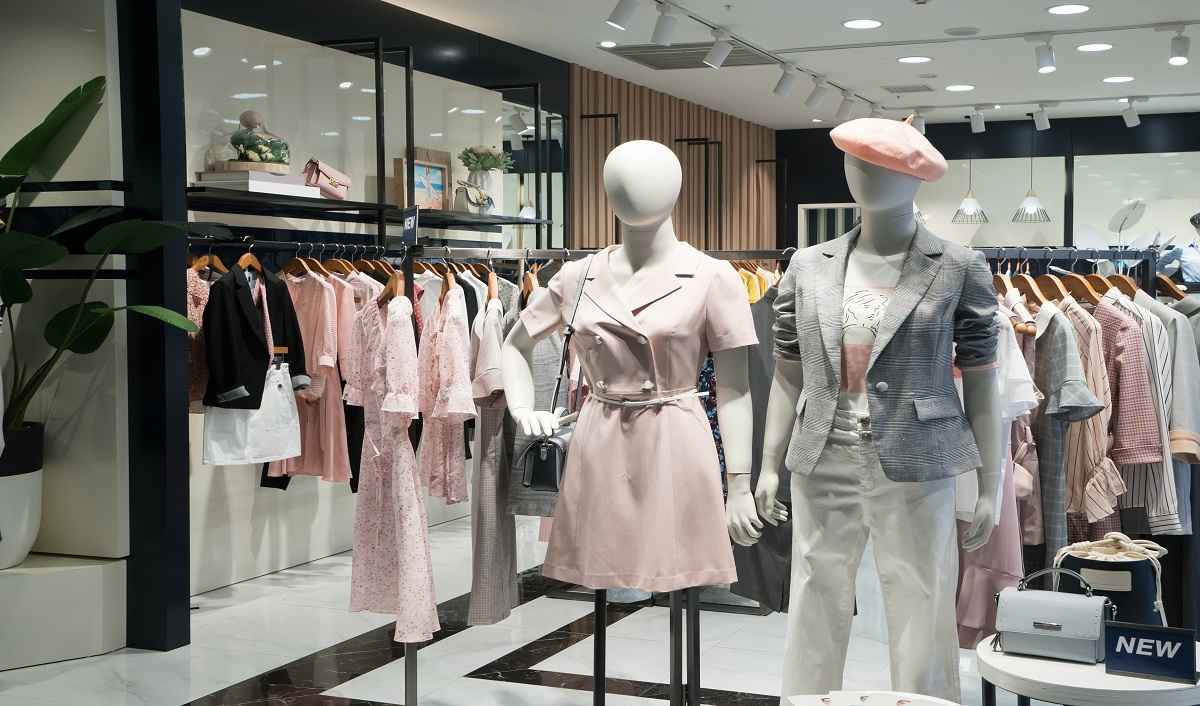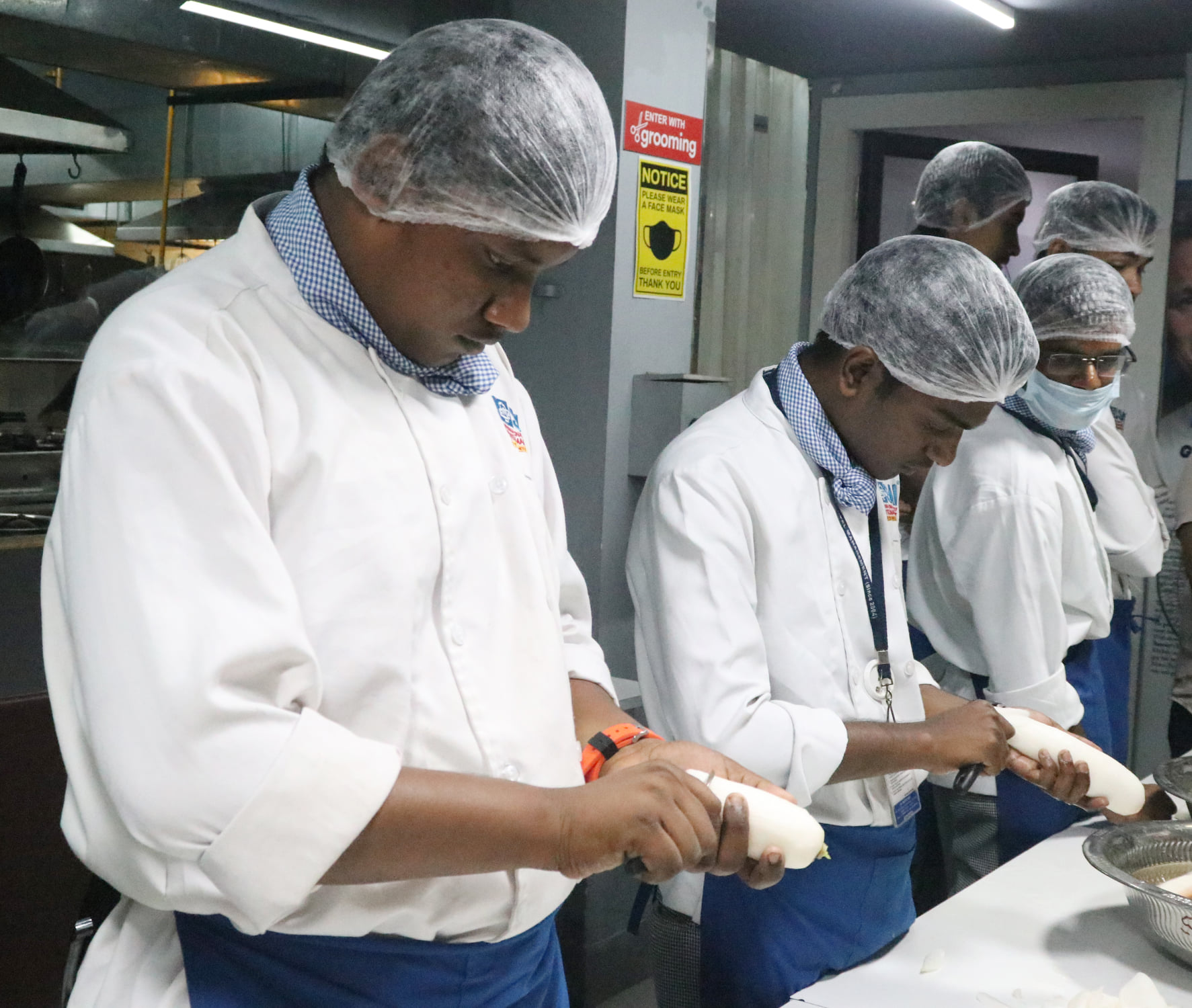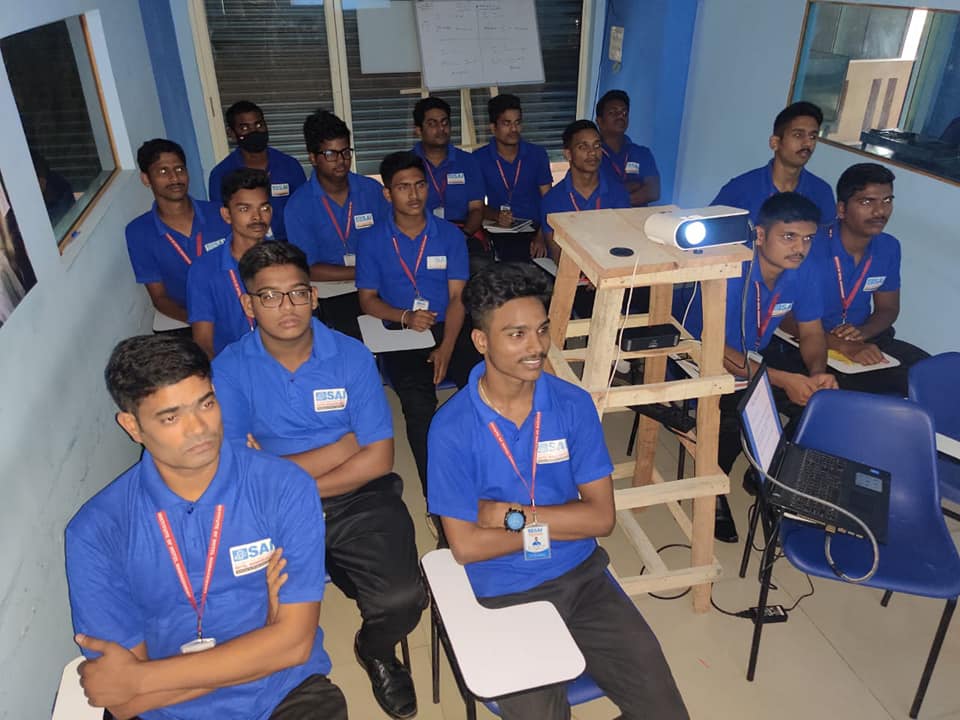
Discover the Exciting Future of Fashion Designing
Welcome to the world of fashion designing, where creativity meets technology to create the freshest trends. As the world evolves, so does the fashion industry. In this article, we’ll explore the emerging trends and exciting technologies that are shaping the future of fashion designing.
The world of fashion designing is constantly evolving, and staying up to date with the latest trends is essential to remain relevant in the industry. In this article, we’ll delve into the impact of technology on fashion designing, the growing trend towards sustainable and eco-friendly fashion, the evolution of fashion education, the increasing popularity of wearable technology, the future of retail and e-commerce, the role of social media in fashion designing, and the importance of diversity and inclusion in the industry.
Whether you’re a fashion enthusiast or a professional designer, this article will be your guide to the future of fashion designing.
The Impact of Technology on Fashion Designing
Technology has revolutionized the way fashion is designed, produced, and marketed. From the use of 3D printing to artificial intelligence to virtual reality, technology is transforming the fashion industry and creating new opportunities for designers and consumers alike.
3D Printing: One of the most significant ways technology is impacting fashion design is through 3D printing. This technology allows designers to create intricate designs and prototypes quickly. With 3D printing, designers can experiment with new shapes and materials, resulting in innovative and unique fashion pieces.
Artificial Intelligence: Another area where technology is transforming the fashion industry is through the use of artificial intelligence. AI can aid designers in predicting trends and consumer behavior, allowing them to create more personalized and targeted designs. This technology is also being utilized in the production process, resulting in more efficient and cost-effective manufacturing.

The Impact of Virtual Reality on Fashion Designing
Virtual Reality: One of the most exciting applications of technology in fashion designing is virtual reality. Designers are using VR technology to create immersive fashion experiences for consumers. With VR, consumers can try on clothes virtually, see how they look, and make purchases without ever leaving their homes. This technology is also being used to create virtual fashion shows, allowing designers to showcase their latest collections to a global audience in a more sustainable and eco-friendly way.
The use of technology in fashion designing is also making fashion more sustainable and ethical. With the help of technology, designers can create clothing that is more environmentally friendly and ethically sourced. Technology is also streamlining the production process, resulting in less waste and more efficient use of resources.
Overall, the impact of technology on fashion designing is profound. It is creating new opportunities for designers and consumers alike, transforming the way fashion is designed, produced, and marketed. As technology continues to evolve, we can expect to see even more exciting and innovative changes in the fashion industry.
Sustainable Fashion and its Future
In recent years, there has been growing concern about the environmental impact of the fashion industry. From the pollution caused by textile production to the waste generated by fast fashion, there is a need for more sustainable and eco-friendly fashion practices. This has led to the rise of sustainable fashion, which aims to reduce the negative impact of fashion on the environment.
Sustainable fashion is about creating clothing that is ethically produced, using eco-friendly materials and processes, and promoting responsible consumption. It is a movement that is gaining momentum in the fashion industry, and designers and brands are taking notice.
One of the key principles of sustainable fashion is the use of eco-friendly materials. This includes organic cotton, hemp, bamboo, and recycled materials. By using these materials, designers can reduce the environmental impact of their clothing, as well as promote a more responsible approach to fashion production.
Another aspect of sustainable fashion is ethical production. This means ensuring that the people who make the clothing are paid a fair wage and work in safe conditions. It also means reducing the carbon footprint of the production process and minimizing waste.
Sustainable fashion is also about promoting responsible consumption. This means encouraging consumers to buy clothing that is durable and high-quality, rather than opting for fast fashion that is designed to be disposable. It means promoting clothing that is timeless and versatile, so that it can be worn for many years without going out of style.
The future of sustainable fashion looks bright, as more and more designers and brands are embracing this approach to fashion production. Consumers are also becoming more aware of the need for sustainable fashion and are willing to pay a premium for clothing that is produced ethically and sustainably.

The Evolution of Fashion Education
As the fashion industry becomes increasingly technology-driven, fashion education is transforming to keep up with the changes. Traditionally, fashion education focused on design skills such as sketching and pattern-making. However, today’s fashion designers need to have a broader skill set that includes knowledge of the latest technology trends and tools.
Leading fashion schools around the world, including Central Saint Martins in London and Parsons School of Design in New York, are adapting their curricula to include courses on 3D printing, virtual reality, and artificial intelligence. These courses provide students with the technical skills necessary to create innovative and sustainable fashion designs.
Moreover, online learning platforms such as Coursera and Udemy are offering fashion-related courses, providing students and professionals with an opportunity to develop their skills from anywhere in the world. These courses cover topics ranging from fashion design to sustainable fashion and e-commerce.
The Role of Technology in Fashion Education
Technology is transforming not only the fashion industry but also how fashion education is delivered. With the rise of e-learning and virtual education tools, students can now access fashion courses and tutorials from anywhere in the world. Many fashion schools are also investing in new technology such as 3D printers and virtual reality tools to offer more innovative and engaging teaching methods.
Moreover, technology is helping fashion students to collaborate and connect with each other more easily. They can share ideas and work on projects together using online platforms such as Pinterest, Behance and Trello.
Skill Development in Fashion Education
In addition to technical skills, fashion education is also focusing on soft skills such as communication, collaboration and entrepreneurship. These skills are essential for success in the fashion industry, where networking and marketing are crucial.
Furthermore, fashion schools are offering more interdisciplinary courses that combine fashion with other subjects such as business, marketing, and sustainability. This interdisciplinary approach helps fashion students to gain a broader understanding of the fashion industry and its impact on society.
The future of fashion education is exciting, with opportunities for students to learn through technology and innovation. As the fashion industry continues to evolve, so too will fashion education, preparing the next generation of fashion designers to lead the way.
The Growing Popularity of Wearable Technology
The fashion industry is no stranger to innovation, and one of the latest trends is the integration of wearable technology into clothing and accessories. As consumers demand more convenient and functional products, designers are exploring new ways to incorporate technology into their designs.
One of the most exciting developments in wearable technology is the use of smart fabrics, which can perform a wide range of functions, from tracking biometric data to adjusting temperature and even changing color. Other wearable tech gadgets, such as fitness trackers and smartwatches, are also becoming increasingly popular among consumers.
But wearable technology is not just about function; it’s also about fashion. Designers are experimenting with incorporating LED lights, holographic elements, and even 3D printed components into their designs to create truly unique and futuristic pieces.
Examples of Wearable Technology in Fashion
Some of the most innovative examples of wearable technology in fashion include:
| Product | Function |
| Google Jacquard | A smart fabric that can be woven into clothing to create touch-sensitive panels that control various functions on a connected device. |
| VylyV | A line of clothing with embedded biometric sensors that monitor the wearer’s heart rate, respiratory rate, and other vital signs. |
| CuteCircuit | A fashion technology company that designs clothes with LED lights, creating a truly futuristic look. |
Wearable technology has also made its way into accessories, such as smart jewelry that can track fitness data and send notifications. As this technology continues to evolve, the possibilities for incorporating it into fashion designs are endless.
Overall, the growing popularity of wearable technology in the fashion industry is an exciting development that blurs the line between fashion and function. As designers continue to experiment with new materials and technologies, we can expect to see even more innovative and cutting-edge designs in the future.
The Future of Retail and E-commerce
Technology is rapidly changing the retail landscape, and the fashion industry is no exception. As consumers continue to shift towards online shopping, retailers and designers are leveraging technology to engage customers and offer personalized experiences. Let’s dive into some of the emerging trends in retail and e-commerce:
Virtual Shopping
The pandemic has accelerated the adoption of virtual shopping, where consumers can browse and buy products in a digital environment. Retailers are investing in augmented reality and virtual reality technology to create immersive shopping experiences, allowing customers to try on clothes virtually and visualize how they will look without leaving their homes.
Virtual shopping is not only convenient, but it is also more sustainable and cost-effective for both retailers and consumers. With the rise of virtual shopping, the role of physical stores is also changing, with many brands shifting towards smaller, more experiential stores that enable customers to engage with products in new ways.
E-commerce Personalization
Personalization is becoming a key differentiator for e-commerce retailers, with many using data and AI to create personalized product recommendations and experiences. By analyzing a customer’s browsing and purchasing history, retailers can tailor product recommendations and marketing messages to individual users, driving up sales and engagement.
Personalization is also extending to the shopping experience itself, with retailers offering customized options such as monogramming and custom sizing. This trend is particularly relevant in the fashion industry, where fit and style are highly personal and subjective.
Social Commerce
Social media platforms are increasingly becoming a key driver of sales for fashion brands, with brands leveraging influencers and user-generated content to promote their products. Social commerce allows consumers to shop directly from social media platforms, streamlining the purchasing process and removing some of the friction points associated with traditional e-commerce.
As social media continues to play a significant role in shaping consumer behavior, it is essential for fashion brands to have a strong presence on these platforms. Brands that can effectively leverage social commerce will be better able to connect with their target audience and drive sales.
The Role of Social Media in Fashion Designing
Social media has become an integral part of the fashion industry, with designers and brands using platforms like Instagram and Twitter to connect with consumers and promote their products. Social media has had a significant impact on the way fashion is marketed and consumed, and it has opened up new opportunities for designers to reach a wider audience.
One of the biggest trends in social media and fashion is influencer marketing. Influencers are social media users with a large following and the ability to influence consumer behavior. Many brands and designers partner with influencers to promote their products and increase brand awareness. This trend has proven to be highly effective in reaching younger consumers, who are more likely to engage with social media content and follow influencers.
Social media has also given designers and brands the ability to interact with consumers in real-time. They can use social media to showcase new products, gather feedback, and address customer concerns. This type of direct interaction can help build brand loyalty and create a sense of community around a brand or designer.
Another trend in social media and fashion is the rise of user-generated content. Many brands encourage customers to share photos of themselves wearing their products on social media, which can help build brand awareness and create a sense of community around the brand. This trend has become particularly popular among younger consumers, who value authenticity and are more likely to trust content created by their peers than traditional advertising.
Overall, social media has had a significant impact on the fashion industry, and it will continue to shape the way fashion is marketed and consumed in the future.
The Importance of Diversity and Inclusion in Fashion Designing
The fashion industry has often been criticized for its lack of diversity and inclusion, but designers and brands are now making an effort to address these issues and create a more inclusive industry.
One of the biggest challenges in the industry is the lack of representation of diverse body types and skin tones. However, many designers are starting to create clothing lines that cater to a wider range of body types and skin tones. This includes brands that specialize in modest clothing for Muslim women, as well as brands that offer extended sizes for plus-size individuals.
Additionally, designers are also starting to feature more diverse models in their campaigns and runway shows. This is not only good for representation but also helps to challenge traditional beauty standards and promote body positivity.
Another important aspect of diversity and inclusion in the fashion industry is the representation of people from different cultures and backgrounds. This includes hiring diverse teams behind the scenes, including designers, stylists, and photographers. It also includes showcasing diverse models and clothing inspired by different cultures and traditions.
It’s not just about the visual representation, but also about the messages that fashion brands communicate. Consumers are increasingly looking for brands that align with their values, including social issues such as gender equality and sustainability. Hence, it’s important for fashion brands to promote these values and stand up for social issues that matter to their consumers.
In conclusion, diversity and inclusion are crucial components of the fashion industry. By embracing diversity and promoting inclusivity, fashion brands can create a more authentic and meaningful connection with their consumers.
Fashion Designing at Sai
Sai Institutions is a well-known fashion designing institute in India that offers a range of courses for students interested in pursuing careers in fashion. Here are some of the features and benefits of studying fashion designing at Sai Institutions:
Experienced faculty: Sai Institutions has a team of experienced faculty members who bring years of industry experience and expertise to their teaching.
Industry-relevant curriculum: The fashion designing courses at Sai Institutions are designed to be relevant to the current fashion industry, ensuring that students are equipped with the skills and knowledge they need to succeed.
State-of-the-art facilities: Sai Institutions has modern facilities and equipment, including computer labs, design studios, and sewing and pattern-making machines, to ensure that students have access to the latest technology and tools.
Hands-on learning: The fashion designing courses at Sai Institutions are structured to provide students with hands-on learning experiences, including design projects, internships, and industry collaborations.
Industry exposure: Sai Institutions provides students with exposure to the fashion industry through guest lectures, workshops, and field trips to fashion events and shows.
Placement support: Sai Institutions has a dedicated placement cell that provides assistance to students in finding employment opportunities in the fashion industry.
Entrepreneurship support: Sai Institutions offers support to students who wish to start their own fashion businesses, including mentoring, incubation, and networking opportunities.
Overall, Sai Institutions is a great choice for students interested in pursuing careers in fashion designing, with its experienced faculty, industry-relevant curriculum, state-of-the-art facilities, hands-on learning, industry exposure, placement support, and entrepreneurship support.
ADVISOR SIDNEY SLADEN ( Celebrity Designer)

5 UNIQUE reasons to join the Fashion department in Sai institutions
- `Educational Campus is in the Heart of Chennai
- Very good Scholarship Schemes for SC / ST Candidates
- 100 % Bank Loans are available
- Accredited Degree from Alagappa University and International Diploma from City Metropolitan College,Singapore with International Internships
- World Class Education at Affordable price, by Highly qualified & Experienced faculties
Come and Join the Best Fashion College in South India, with personal attention, Training and Mentoring to students by a highly acclaimed Professional & be a CAPTAIN of your Destiny !!
For Free Career Counselling
Ph : 98846 14599
Address: 27, NRS Building, Velachery Rd, Little Mount, Saidapet, Chennai, Tamil Nadu 600015
website : https://saiinstitutes.in
Add Comment
You must be logged in to post a comment.




